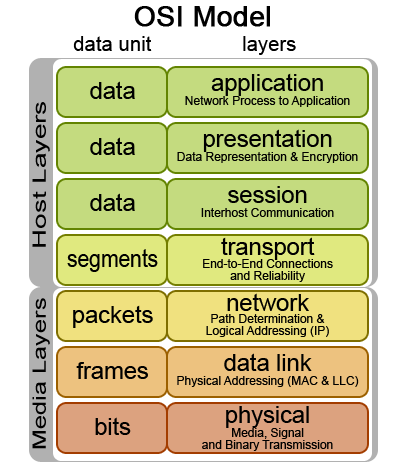In this article, we will go over how you can use proxychains to proxy our traffic through a socks proxy.
Background
Recently, like everyone else, I’ve been working from home a lot more often. This means to access resources at work I need to use a VPN. However, to access some resources, such as production servers from my local machine, I need to use a SOCKS5 proxy. Without using a SOCKS proxy, I would need to do something shown in the diagram below.
Example Setup
First, I would need to SSH onto an intermediate server (Server A), which I have connectivity to from my local machine.
Then on that intermediate server, I would need to SSH onto the production server. So this intermediate server needs
to have connectivity to the Server B as well. As you can see Server B is behind a firewall, in this example, the
firewall will only allow traffic from Server A to ingress to Server B. So we cannot connect directly from Server A.
Another reason this setup is sub-optimal is because, I lose all the development tools on my local machine. Say I wanted
to use terraform to deploy/upgrade a service running on Server B server. I need to make sure terraform exists
on the intermediate server. Now, this is fine for something simple like terraform which is a single binary file
but may get more complicated for other pieces of software, especially if you cannot install extra packages on
the intermediate server. Also, there are other advantages in using your local development environment: you have
all your shortcuts saved, perhaps you use a different shell zsh, fish vs bash on the server itself. For whatever
reason, it may be more convenient to access Server B directly from our local machine.
🔐 Production Access
Now depending on where you work and how your policies work it may not be possible or a good idea to access your production servers from your local machine. This is just a simple example of one reason you may want to use a SOCKS proxy. There may be many others, such as accessing your test environment instead of production.SOCKS Proxy
In this section, I will show you how to solve the problem we described above. To solve this problem we will need to use,
a SOCKS (🧦 not this kinda socks) proxy. SOCKS is a layer 5 (on the OSI model, shown below) protocol. The protocol will allow
us to proxy to Server A and this server will then act as almost a middleman between the Local Machine and Server B.
The SOCKS proxy doesn’t interpret any network traffic between the client (Local Machine) and the
server (Server B), it merely passes it onto between the two.

SOCKS Proxy
You can learn more about SOCKS proxies here. This article goes into much more detail than I do!SSH Command
So finally let’s get onto how we can create a SOCKS proxy. To do this we will create an SSH tunnel.
ssh -D 8123 -f -C -q -N [email protected]
-D 8123: Opens a SOCKS5 proxy on local port8123-f: Requests SSH to go to the background itself before executing the command-C: Compresses data before sending it-q: Quiet mode doesn’t show any output-N: Doesn’t execute remote commands, useful for just port forward (protocol 2+)
Multiple Proxies
You can create multiple SOCKS proxies by running the SSH command binding to different local ports.If the command worked, you now have a SOCKS proxy. One common use case of a SOCKS proxy is for internet browsing using very much the same logic described above. Maybe you can access a website at work which is behind a firewall, such as an authentication server’s GUI etc. You can read more about using a SOCKS proxy, in your browser here. The diagram gives us a visual of what we’ve just done.
Proxychains
Now that we have SOCKS proxy running on our local machine, how can we use it to connect to Server B and say
use terraform to deploy a new service? Well, that’s where proxychains comes in, or rather more specifically
proxychains-ng. The latter being a version which still gets relatively frequent updates.
To install proxychains on an Ubuntu/Debian based distro you can do something like this:
Install
sudo apt install proxychains-ng
vim /etc/proxychains4.conf
[ProxyList]
# add proxy here ...
# meanwile
# defaults set to "tor"
socks5 127.0.0.1 8123
Edit the configuration file as shown above, socks5 127.0.0.1 8123. Adjust the port 8123 to whatever port you set above.
Now that proxychains is setup. This is what our setup now looks like:
Examples
If Server B had an IP address of 10.10.10.11 we could do:
proxychains ssh [email protected]
This would allow us to connect directly using SSH. Or perhaps if you had a web service running on Server B and wanted to
check a healthcheck endpoint to see if your API was running correctly you might do:
proxychains curl https://10.10.10.11/api/v1/healthcheck
Or if you wanted to use terraform to deploy something on Server B, you could do something like:
Terraform
To get terraform to use our SOCKS proxy we need to export theHTTP_PROXY and HTTPS_PROXY variables.export HTTP_PROXY=socks5://127.0.0.1:8123
export HTTPS_PROXY=socks5://127.0.0.1:8123
proxychains terraform plan
proxychains terraform apply
ProxyChains TCP
proxychains will only proxy TCP connections from yourLocal Machine.
However, it can resolve DNS through the proxy as well.What is essentially going on here is that traffic is being sent from our Local Machine to Server A which can
connect to Server B and pass traffic to the server. This in effect makes it seem our Local Machine can connect
directly to Server B.
So overall we have something as described in the diagram above!
Appendix
- Read more about SOCKS Proxies here
- Read more about how to setup a SOCKS here